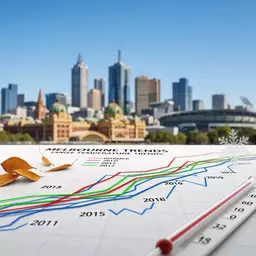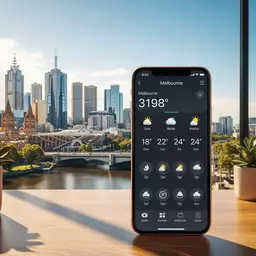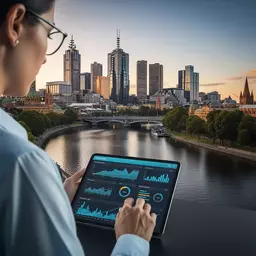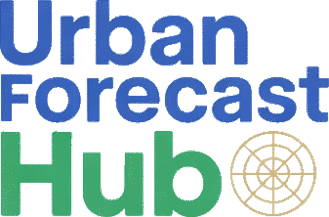Melbourne's Changing Rainfall Patterns
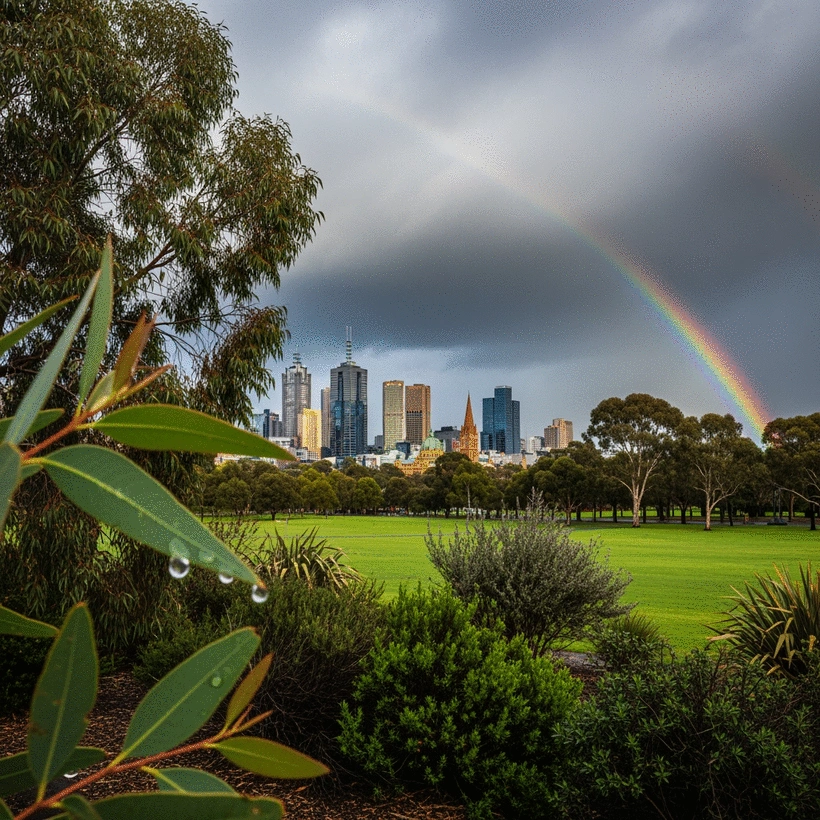
As climate change continues to reshape our world, understanding its local impacts becomes increasingly vital. Are you prepared for the shifting weather patterns in Melbourne? By grasping the effects of climate change, we can navigate our future with resilience and informed action.
What You Will Learn
- Increased rainfall variability: Seasonal shifts lead to unpredictable rainfall patterns that affect daily life and local businesses.
- Extreme weather events: Heavy rainfall events are becoming more frequent and intense, posing risks to infrastructure and safety.
- Urban heat islands: Local temperature differences complicate our understanding of rainfall distribution and contribute to weather unpredictability.
- Community involvement: Engaging in local initiatives is essential for adapting to changes and fostering resilience within the community.
Melbourne's Changing Rainfall Patterns: Key Trends & Impacts
This visual summarizes key shifts in Melbourne's rainfall, influenced by climate change, and highlights the factors contributing to these changes.
Rainfall Trends (BoM Data)
- Decreased average annual rainfall
- Increased intensity during storms
- Variability in seasonal distribution
Climate Change Effects
- Reduced winter rainfall
- Longer dry spells (summer)
- Increased extreme weather events
Greenhouse Gas Impact
- CO2 emissions from vehicles
- Methane from agriculture
- Deforestation impacts ecosystems
Key Takeaways & Actions
- Increased rainfall variability
- More intense extreme weather
- Community involvement is vital
Understanding Climate Change and Its Impact on Rainfall Patterns in Melbourne
Climate change is a pressing global issue that affects all regions, including our vibrant city of Melbourne. As a dedicated meteorologist, I’ve observed how shifts in climate patterns are influencing our local weather, making it vital for residents and businesses to understand these changes. Our unique situation, marked by fluctuating temperatures and rainfall, means that staying informed is more crucial than ever! For a deeper dive into how Melbourne's climate is changing, explore our article on Melbourne Climate Trends for 2025.
- Increased temperatures
- Changing rainfall distribution
- More frequent extreme weather events
These factors can significantly impact everything from agriculture to day-to-day activities. By recognizing the effects of climate change on our region, we can better prepare and adapt to the challenges ahead.

Overview of Climate Change Effects in Melbourne
Melbourne is experiencing a transformation in its climate, and it’s essential to grasp the broader implications of these changes. Globally, climate change leads to rising temperatures, shifting weather patterns, and altered water cycles. Here in Melbourne, we see these effects manifesting through less predictable rainfall patterns and increased occurrences of heatwaves.
- Reduced winter rainfall
- Longer dry spells during summer
- Overall increase in the frequency of extreme weather
Understanding these effects can help us make informed decisions and adjustments in our daily lives.
Recent Rainfall Trends in Melbourne
To grasp how climate change affects us locally, let’s turn to data from the Bureau of Meteorology (BoM). Recent analyses show a notable shift in our rainfall patterns:
- Decreased average annual rainfall
- Increased rainfall intensity during storms
- Variability in seasonal rainfall distribution
These trends are not just numbers; they translate into real-life implications for our water supply, agriculture, and even our urban infrastructure. By keeping an eye on these patterns, we can better prepare for what lies ahead. For further insights into how businesses are adapting, check out Melbourne Businesses and Rainfall Insights.
The Role of Greenhouse Gases in Climate Change
Greenhouse gases play a significant role in climate change, contributing to the warming of our atmosphere. In Melbourne, the increase in these gases is linked to various human activities such as transportation and industrial processes. This warming impacts our weather systems, making rain events more intense and unpredictable.
- Carbon dioxide emissions from vehicles
- Methane emissions from agriculture
- Deforestation impacts on local ecosystems
Understanding how these gases influence our weather is key to developing effective local strategies to mitigate their impact and adapt to the changing climate. By making conscious choices in our daily lives, we can contribute to a healthier environment for all Melburnians!
Pro Tip
To effectively manage the impacts of changing rainfall patterns, consider implementing water-saving technologies at home and in your business. Solutions such as rainwater tanks, permeable paving, and drought-resistant landscaping can help conserve water and reduce the strain on our local water supply. By making these adjustments, you not only contribute to sustainable practices but also prepare for the unpredictable weather ahead!
Building a Resilient Future for Melbourne Residents and Businesses
As we've explored the impacts of climate change on rainfall patterns in Melbourne, it's clear that both residents and businesses face unique challenges. Understanding these changes is essential for building a resilient future, where we can adapt and thrive despite the unpredictable weather. Let's recap some of the key takeaways that can guide our actions moving forward!
Summarizing Key Takeaways
In summary, here are the crucial points regarding rainfall pattern changes in Melbourne:

- Increased rainfall variability: We've noted shifts in seasonal weather, leading to unpredictable rainfall patterns.
- Extreme weather events: The frequency and intensity of heavy rainfall have increased, impacting everything from daily life to local businesses.
- Urban heat islands: These areas create temperature differences that further influence local weather patterns, complicating our understanding of rainfall distribution.
- Community involvement: The role of community action is vital in adapting to these changes and fostering resilience.
By grasping these points, we can take informed steps to prepare for the future. It’s not just about understanding what’s happening; it’s about knowing how to respond effectively!
Encouraging Community Action and Preparedness
Community involvement is key to addressing the challenges posed by changing rainfall patterns. By working together, we can enhance our collective resilience. Here are some ways we can get involved:
- Participate in local workshops: These can provide valuable information on flood preparedness and home maintenance.
- Join neighborhood groups: Collaborating with neighbors helps share resources and ideas for adapting to climate impacts.
- Engage in local clean-up efforts: Keeping our waterways and drainage systems clear helps reduce flood risks during heavy rainfall.
I encourage you to connect with your local community through Urban Forecast Hub’s resources. Together, we can not only prepare for the challenges ahead but also create a supportive network that empowers everyone! For more information on how Melbourne is adapting, see Melbourne's Climate Adaptation Strategies.
Promoting Public Awareness Campaigns on Climate Issues
Raising public awareness about climate change and its impacts is vital for driving action. Education is the first step toward making meaningful changes. Here’s how we can promote awareness:
- Organize informational events: Community gatherings can help share knowledge about climate change and its local effects.
- Utilize social media: Sharing articles and resources can help spread the word about the importance of preparedness and adaptation.
- Collaborate with schools: Educating younger generations about climate issues ensures that future leaders are equipped to tackle these challenges.
At Urban Forecast Hub, we are committed to providing accessible information that empowers our Melbourne community. Let’s make sure everyone is informed and ready to take action for a sustainable future!
Frequently Asked Questions About Melbourne's Changing Rainfall Patterns
- What are the main changes observed in Melbourne's rainfall patterns?
- Melbourne is experiencing increased rainfall variability, with decreased average annual rainfall but increased intensity during storms, and shifts in seasonal distribution, including reduced winter rainfall and longer summer dry spells.
- How does climate change influence these rainfall changes?
- Climate change contributes to higher temperatures, which alter water cycles and lead to more unpredictable rainfall patterns and an increase in the frequency of extreme weather events.
- What role do greenhouse gases play in Melbourne's changing climate?
- Greenhouse gases, primarily from vehicle emissions, agriculture, and deforestation, trap heat in the atmosphere, warming the planet and leading to more intense and unpredictable rain events in Melbourne.
- What are "urban heat islands" and how do they affect rainfall?
- Urban heat islands are metropolitan areas that are significantly warmer than their surrounding rural areas. These temperature differences can influence local weather patterns, complicating the distribution of rainfall and contributing to weather unpredictability.
- How can the community get involved in adapting to these changes?
- Community members can participate in local workshops on flood preparedness, join neighborhood groups to share resources, and engage in local clean-up efforts to reduce flood risks. Promoting public awareness through informational events and social media is also crucial.
Recap of Key Points
Here is a quick recap of the important points discussed in the article:
- Increased rainfall variability: Seasonal weather shifts lead to unpredictable rainfall patterns.
- Extreme weather events: The frequency and intensity of heavy rainfall have increased, impacting daily life and local businesses.
- Urban heat islands: Temperature differences in urban areas complicate our understanding of rainfall distribution.
- Community involvement: Active participation is essential for adapting to climate changes and fostering resilience.
